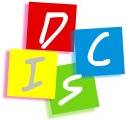"Dealing with people is probably the biggest problem you face, especially if you are in business. Yes, and that is also true if you are a housewife, architect or engineer."
~ Dale Carnegie
"Don't be afraid to give your best to what seemingly are small jobs. Every time you conquer one it makes you that much stronger. If you do the little jobs well, the big ones will tend to take care of themselves."
~ Dale Carnegie
"Stubbornly persist, and you will find that the limits of your stubbornness go well beyond the stubbornness of your limits."
~Robert Brault
|
Quick Links
...transforming talent into performance |
|
905-257-7227
E-mail:
Web Site
Let's Connect at Twitter -
http://twitter.com/RebeccaHeaslip
and at LinkedIn -
|
|
|
Octogenarian Jean Hill of Concord Mass. successfully campaigned to have water bottles banned in her town after learning about the giant floating island of trash in the Pacific Ocean.
The Concord Town Council passed the vote to ban water bottles; however many of the major bottled water companies are threatening to sue citing interstate commerce laws.
It is an interesting dilemma and raises many questions. You may be thinking: 'How far would I go to live my life according to my values?' Do I work for a company whose value system is aligned with mine? Does my company act in a socially responsible manner? As a Manager, what legacy or example do I want to leave my team, the organization, my family?
Enjoy this issue of talent talk and enjoy the lovely summer weather!
Cheers,
Rebecca |
| _____________________________________ | |
Want to Move High Potentials Into Star-Performers?
 You'll need something more than just a token effort when it comes to cultivating workers with the most potential to grow into corporate-level leadership roles. Leadership talent-otherwise known as high potentials-can actually be generated through the speed-to-market product methodology the same way competitive advantage is fostered. More to the point, this is one of the best methods out there to accelerate a high potential's growth into superstardom, so to speak. By effectively nurturing the competencies and leadership skills of these prospects, you'll be able to firmly tell which of them will eventually become the future leaders of your company. You'll need something more than just a token effort when it comes to cultivating workers with the most potential to grow into corporate-level leadership roles. Leadership talent-otherwise known as high potentials-can actually be generated through the speed-to-market product methodology the same way competitive advantage is fostered. More to the point, this is one of the best methods out there to accelerate a high potential's growth into superstardom, so to speak. By effectively nurturing the competencies and leadership skills of these prospects, you'll be able to firmly tell which of them will eventually become the future leaders of your company.
You should be able to distinguish yourself from your competitors and extend your competitive advantage in the field by becoming the ideal organization when it comes to farming and cultivating potential talents.
To be true, the demand for these possible star performers is rapidly outgrowing the supply, so you must be prudent when handling this issue. Active focus on recognizing and developing these diamonds in the rough is certainly commendable, but very few businesses are able to accomplish this task in an effective manner.
Studies and Profiles of High Potential Development
The Corporate Leadership Council conducted a recent survey that revealed a rather interesting issue: about seventy-five percent of organizations around the world aren't confident in their capabilities when it comes to effectively staffing leadership positions for star performers for the next half decade. Furthermore, this conference board study discloses that only thirty-four percent of businesses are reliable in terms of identifying high potentials during the early parts of their career, so it's basically up to the employees in the remaining sixty-six percent of companies to perform well in order to be recognized. In short, less than half of all enterprises worldwide are actually helping to nurture their high potentials from the very start.
In contrast, firms that are able to recognize and improve high-potential employees have been shown to garner immense shareholder returns simply because they are able to make the most out of their human resources. In fact, any company that's efficient enough to optimize and streamline their assets-especially their workers-should do quite well in their chosen market. Meanwhile, a Hewitt Associates study of U.S. conglomerates suggests that those who exert a modicum of effort when it comes to developing high potentials do perform in the seventy-fifth percentile or higher for TSR or total shareholder returns. These higher results are indicative of why it's important to track and improve the performance of your would-be star performers.
Potential Star Performer Assessments
In order to consistently achieve measurable success in terms of high-potential employee development, a corporation must be willing to engage in a quality program that regularly identifies and develops the desired abilities and traits of their best workers. Using assessments to identify the attributes, competencies, behaviors, & motivators will give you (and the employee) great insights as to what it will take to turn them into a star performer.
High potentials have a tendency to be better than the rest of their peers and achieve stellar results comparable to those who've had more work experience than them. In order to examine them properly and move them into star performer status, managers must use multiple methods of assessment, compare the outcomes with known criteria that are linked with a particular leadership level, and communicate clearly their objectives for these special workers. Only the true star performers will be able to face this challenging stage of their career as they attempt to prove their worth, set goals, and comprehend their environment.
~ Written by our associate Gary Sorrell. Copyright protected worldwide, all rights reserved. Sorrell Associates, LLC
If you have any questions about this article, or about how we can help you with your current business needs, contact us at 905-257-7227 or E-mail: info@leadership-insight.com. |
| _____________________________________ | |
How to Successfully Fix the Hiring Process with Job Benchmarking

If you missed our previous articles "Job Benchmarking To Improve the Bottom Line," and/or "Using Job Benchmarking To Avoid Unnecessary Costs" please contact us.
Sometimes the hiring process can be very tricky. The things that we look for when we're hiring somebody are not necessarily the things that are going to make them successful in a particular role. When you consider what a hiring individual will look at and how they will react to a candidate you can see how mistakes might happen in the hiring process.
You've probably heard the expression that first impressions are important. This is very true and there are differing opinions about how long it takes for one individual to assess another person. The general consensus is that it does not take very long for one person to decide whether or not they like another person. It's easy to see how this can influence people to make hasty decisions about hiring somebody for a job.
The reasons that one person hiring another might have bias can come from a number of different sources. It can come down to the color of the clothes that the interviewee is wearing. The interviewer might not do this consciously, as if they don't like the color of a blouse or a tie the candidate is wearing they might be judging them adversely without even knowing it.
There can be positive bias as well. Sometimes a more attractive candidate ends up getting the role as opposed to somebody who is not ready to be on the cover of a magazine. It has nothing to do with whether or not they are a good candidate. The person being interviewed might have something in common with the interviewer or they may be a friend of a friend and nobody else in the company knows that that person is pretty much a lock to get the role before the interview even starts.
To solve the problem, companies need to engage in job benchmarking. Instead of starting with a stack of 100 resumes and trying to pick out the ones that are free from spelling errors, it makes a lot more sense to start with the role / job. Once the accountabilities of that role have been identified, only then should a company start to look for a suitable candidate to fill those requirements.
Sometimes this is not easily done by someone who is inside the company. They may have other responsibilities and they are not likely fully trained to benchmark a position. They may not be asking themselves the right questions when they try to figure out what that role means to the company and what the person who fills that role should be responsible for in order to be successful in the job. Assessments are the key to doing this correctly and without personal bias.
You might drive your car every day but when it comes time to get it fixed, it's not something you try to do yourself. Somebody in your company might be the best manager possible, but they may not have the skills to choose the perfect candidate for a role on their team. If you engage the services of a good job benchmarking company, then it will allow the manager to focus on their job while someone else helps to choose the right candidate.
~ © Copyright protected, all rights reserved worldwide. Sorrell Associates
|
| _____________________________________ | |
Do You Need to Learn About the DISC Behvioral Assessment?
 DISC is the behavioral model based on the work of William Moulton Marston (1893-1947) to examine the behaviors of individuals. This model is based on his book, "The Emotions of Normal People" and focuses on the styles and preferences of human behavior. DISC is the behavioral model based on the work of William Moulton Marston (1893-1947) to examine the behaviors of individuals. This model is based on his book, "The Emotions of Normal People" and focuses on the styles and preferences of human behavior.
Understanding the term DISC is very easy and incredibly powerful. DISC stands for Dominance, Influence, Steadiness, and Compliance. These all have different areas of definition in themselves. Each area gives us information on:
- How you approach problems & challenges
- How you deal with people and information
- How you relate to the pace of the environment and change
- How you respond to procedures, rules, and constraints
Learning the DISC behavioral assessment will help you: Understand your own behavioral style, Understand & appreciate others styles, and How to Adapt for better communication and understanding
DISC is often used in employee selection and retention, as well as professional development but helps in more ways than one would think, such as, executive or professional coaching, training & development, communication, promotion, team building, goal setting, sales, social relationships, career planning, etc...
Once you have an understanding of DISC and its benefits you will quickly see how it will help you... daily! Plus the DISC assessment is not time consuming. A good DISC behavioral assessment will only take you about 10 minutes to complete but the value of the information will help you for a lifetime.
~ Written for us by our associate Gary Sorrell, Copyright protected worldwide. All rights reserved. |
|
|
|
|